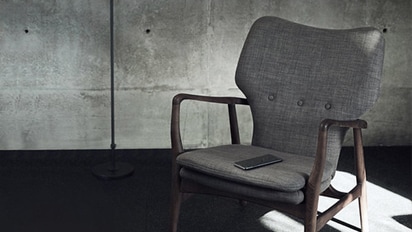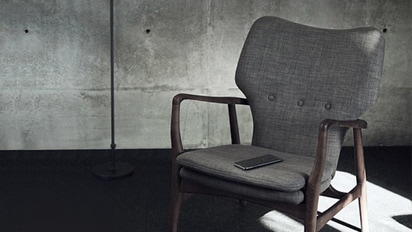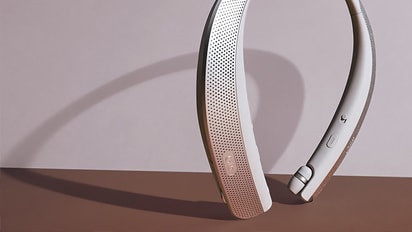Leaks from top load washers are easily resolved without a technician's support if the source can be identified. If your machine is a front load washer, please visit our article on Leaking - Front Load Washer.
Select the area most likely to be causing your leakage below:
Leaks from Home Water Valves.
-
Check the valve.
Inspect the valve, the connecting end of the drain pipe, and the connecting end of the hoses to the valve.
-
The hoses connecting to the supply valve may just need to be tightened.
-
If the water tap itself is leaking at the pipe or around the valve, you'll need to contact a plumber to correct the issue.
-
-
Check the water hose.
If the leak is coming from the connecting end of the hose to the valve, where the hose threads onto the tap;
-
Turn OFF the hot and cold water tap.
-
Remove the hose and look inside the hose fitting. Ensure that you have a bucket to drain the remaining water from the hose.
-
There should be a RUBBER SEAL in place. If it's torn, damaged, or missing it will need to be replaced.
-
Leaks from Home Water Valves.
-
Check the valve.
Inspect the valve, the connecting end of the drain pipe, and the connecting end of the hoses to the valve.
-
The hoses connecting to the supply valve may just need to be tightened.
-
If the water tap itself is leaking at the pipe or around the valve, you'll need to contact a plumber to correct the issue.
-
-
Check the water hose.
If the leak is coming from the connecting end of the hose to the valve, where the hose threads onto the tap;
-
Turn OFF the hot and cold water tap.
-
Remove the hose and look inside the hose fitting. Ensure that you have a bucket to drain the remaining water from the hose.
-
There should be a RUBBER SEAL in place. If it's torn, damaged, or missing it will need to be replaced.
-
Inlet Valves Connection
-
Inspect the inlet hose area.
The inlet hoses for hot and cold water are connected to the back of your washer. If you notice leakage around this connection;
-
Turn off the hot and cold home water taps to inspect the hoses.
-
The hoses connecting to the back of the washer may just need to be tightened.
-
-
Remove to inspect inlet hoses.
-
Remove and reconnect the water hose to the back of the machine.
-
Ensure that you have a bucket to drain the remaining water from the hose.
-
This end of the water hose also has a RUBBER SEAL inside the fitting. Make sure it is in place and not damaged or torn.
-
Do not cross thread the fittings and tighten them securely to stop the leaking.
-
Inlet Valves Connection
-
Inspect the inlet hose area.
The inlet hoses for hot and cold water are connected to the back of your washer. If you notice leakage around this connection;
-
Turn off the hot and cold home water taps to inspect the hoses.
-
The hoses connecting to the back of the washer may just need to be tightened.
-
-
Remove to inspect inlet hoses.
-
Remove and reconnect the water hose to the back of the machine.
-
Ensure that you have a bucket to drain the remaining water from the hose.
-
This end of the water hose also has a RUBBER SEAL inside the fitting. Make sure it is in place and not damaged or torn.
-
Do not cross thread the fittings and tighten them securely to stop the leaking.
-
Leaks from Inlet Hoses
-
Inspect inlet hose for leaks.
Inspect the length of the inlet hoses for any crack or tear that could be causing water to leak. If the hoses are damaged, they will need to be replaced.
For your convenience, please visit our Parts and Accessories page to purchase a replacement.
Leaks from Inlet Hoses
-
Inspect inlet hose for leaks.
Inspect the length of the inlet hoses for any crack or tear that could be causing water to leak. If the hoses are damaged, they will need to be replaced.
For your convenience, please visit our Parts and Accessories page to purchase a replacement.
Leaks from Drain Hose and Home Drain.
-
Is the drain hose damaged?
-
Request repair?
If the drain hose is damaged, kinked, crushed or pinched, this will lead to excessive leaking from your washer. The unit requires a repair service, visit our Request a Repair page.
-
Check for clogs or restriction.
-
Verify if the home drain is installed securely.
-
Check the standpipe into which the hose drains to see if it is draining properly.
-
If the home drain/standpipe is clogged or is restricted, water will overflow onto the floor. This may be perceived as a washer leak.
How to test the drain hose/standpipe:
Pour a pitcher of water into the standpipe. The water should be poured quickly to mimic the drain action of the washer. If water overflows, contact a plumber immediately.
-
Leaks from Drain Hose and Home Drain.
-
Is the drain hose damaged?
-
Request repair?
If the drain hose is damaged, kinked, crushed or pinched, this will lead to excessive leaking from your washer. The unit requires a repair service. Please visit our Request a Repair page.
-
Check for clogs or restriction.
-
Verify if the home drain is installed securely.
-
Check the standpipe into which the hose drains to see if it is draining properly.
-
If the home drain/standpipe is clogged or is restricted, water will overflow onto the floor. This may be perceived as a washer leak.
How to test test the drain hose/standpipe:
Pour a pitcher of water into the standpipe. The water should be poured quickly to mimic the drain action of the washer. If water overflows, contact a plumber immediately.
-
Leaks from Dispenser
-
Check the bleach dispenser.
RESIDUE BUILDUP in the bleach dispenser may cause it to overflow and leak out from underneath the washer.
-
POUR HOT WATER into the bleach dispenser to clean it out and run TUB CLEAN CYCLE.
A dispenser leak from the main wash or softener compartment should not lead to water on the floor.
-
-
Check home water pressure.
If the home has HIGH WATER PRESSURE, the dispenser may appear to be leaking as the wash cycle runs. This is likely due to overfilling of the trays. Turn down the water valves and run another cycle.
The recommended water supply pressure must be between 14.5 psi and 80 psi (100~552 kPa). If the water supply pressure is more than 116 psi, a pressure reducing valve must be installed.
Leaks from Top Lid.
-
Overloaded wash tub.
Leaks from the top load can be caused by an overloaded wash tub. Take care not to overload the wash tub.
-
The washer can be fully loaded, but clothing items should not be tightly packed inside.
-
When loading wash items, the top of the clothing should not be higher than the top level of holes in the drum.
-
Buoyant items that float to the top of the water may also cause water to splash out of the drum.
-
Leaks from Top Lid.
-
Overloaded wash tub.
Leaks from the top load washer can be caused by an overloaded wash tub. Ensure tthat you do not to overload the wash tub.
-
The washer can be fully loaded, but clothing items should not be tightly packed inside.
-
When loading wash items, the top of the clothing should not be higher than the top level of holes in the drum.
-
Buoyant items that float to the top of the water may also cause water to splash out of the drum.
-
-
If it leaks underneath or you are unable to determine the source of the leakage, answer the simple questions for quick help.
Did the leak happened SUDDENLY, or does it happen on EVERY load?
Suddenly Every Time -
We need to check if the washer leaks with an empty load. Run a empty cycle with NO LOAD.
Does the washer leak with an empty load?
Yes No -
The washer is working perfectly, you only need to know the following important factors that may lead to leakage.
-
Bleach dispenser.
RESIDUE BUILDUP in the bleach dispenser may cause it to overflow and leak out from underneath the washer.
-
POUR HOT WATER into the bleach dispenser to clean it out and run TUB CLEAN CYCLE.
A dispenser leak from the main wash or softener compartment should not lead to water on the floor.
-
-
Waveforce cycle.
When the waveforce cycle operates on a very large load it is possible for some water to splash at the top of the drum, resulting in water on the floor.
-
Floating load.
Large single items such as pillows and duvets can float at the top of the water in the tub. This can cause water to splash out and onto the floor.
-
Use HE detergent.
Over sudsing can occur if you're not using an HE branded detergent in the machine. This could result in water leaking from the unit. If you're not use an HE brand we recommend swapping the detergent you use. It may also be necessary to cut back on the amount of detergent used as well.
-
Check washer level.
Use a carpenter's level to be certain that the machine is leveled properly. Detailed installation instructions can be found in the model specific owner's manual.
-
-
If the washer leaks everytime or with an empty load, we need to check the following leakage areas for possible leakage sources.
Leaks from Top Lid.
Leaks from the top load can be caused by an overloaded wash tub. Take care not to overload the wash tub.
-
The washer can be fully loaded, but clothing items should not be tightly packed inside.
-
When loading wash items, the top of the clothing should not be higher than the top level of holes in the drum.
-
Buoyant items that float to the top of the water may also cause water to splash out of the drum.
-
Does this step stop the leaking?
Yes No, Proceed to Inlet Hoses -
Good job, avoid overloading the wash tub in the future. Clothing should be loaded properly and evenly distributed.
Leaks from Inlet Hoses
Inspect the length of the inlet hoses for any crack or tear that could be causing water to leak. If the hoses are damaged, they will need to be replaced.
For your convenience, please visit our Parts and Accessories page to purchase a replacement.
-
Does this step stop the leaking?
Yes Proceed to Inlet Valves Connection -
Good job, you can easily replace your inlet hose, this can be done by your plumber or by using our Request a Repair service.
Inlet Valves Connection
-
Inspect the inlet hose area.
The inlet hoses for hot and cold water are connected to the back of your washer. If you notice leakage around this connection;
-
Turn off the hot and cold home water taps to inspect the hoses.
-
The hoses connecting to the back of the washer may just need to be tightened.
-
-
Remove to inspect inlet hoses.
-
Remove and reconnect the water hose to the back of the machine.
-
Ensure that you have a bucket to drain the remaining water from the hose.
-
This end of the water hose also has a RUBBER SEAL inside the fitting. Make sure it is in place and not damaged or torn.
-
Do not cross thread the fittings and tighten them securely to stop the leaking.
-
If you need to replace the inlet hoses or the rubber seal, please visit our Parts and Accessories page to purchase a replacement part.
-
-
Does this step stop the leaking?
Yes Proceed to Home Drain & Hose -
Good job, you can easily replace your inlet hose, this can be done by your plumber or by using our Request a Repair service.
Leaks from Drain Hose and Home Drain.
-
Is the drain hose damaged?
-
Request repair?
If the drain hose is damaged, kinked, crushed or pinched, this will lead to excessive leaking from your washer. The unit requires a repair service. Please visit our Request a Repair page.
-
Check for clogs or restriction.
-
Verify if the home drain is installed securely.
-
Check the standpipe into which the hose drains to see if it is draining properly.
-
If the home drain/standpipe is clogged or is restricted, water will overflow onto the floor. This may be perceived as a washer leak.
How to test the drain hose/standpipe:
Pour a pitcher of water into the standpipe. The water should be poured quickly to mimic the drain action of the washer. If water overflows, contact a plumber immediately.
-
Does this step stop the leaking?
Yes Proceed to Home Drain & HoseGood job, you can easily replace your inlet hose, this can be done by your plumber or by using our Request a Repair service.
Leaks from Home Water Valves.
-
Check the valve.
Inspect the valve, the connecting end of the drain pipe, and the connecting end of the hoses to the valve.
-
The hoses connecting to the supply valve may just need to be tightened.
-
If the water tap itself is leaking at the pipe or around the valve, you'll need to contact a plumber to correct the issue.
-
-
Check the water hose.
If the leak is coming from the connecting end of the hose to the valve, where the hose threads onto the tap;
-
Turn OFF the hot and cold water tap.
-
Remove the hose and look inside the hose fitting. Ensure that you have a bucket to drain the remaining water from the hose.
-
There should be a RUBBER SEAL in place. If it's torn, damaged, or missing it will need to be replaced.
-
Request a Repair
If you have tried all the above troubleshooting steps and the issue still persist, the unit requires a repair service. Please visit our Request a Repair page.
-
When water won't stop filling the tub, this may be the result of the drain hose installation or the cycle selected.
-
Drain hose must be 35 inches above the floor.
If the drain hose is installed at a very low height (lower than the maximum water level height in the wash tub), a siphon effect may occur as the washer begins to fill and the washer will not be able to reach the desired water level.
The total height of the hose should be approximately 35-47" (0.9 - 1.2 m) from the floor. Proper drain hose installation should appear like the illustration below:
If the drain hose is installed correctly, in some cases, a foreign object may have become stuck in the inlet valve. If this is the case, then the inlet valve would need to be replaced.
If you need to replace the inlet hoses, valve or the rubber seal, please visit our Parts and Accessories page to purchase a replacement part.
-
Unbalanced load.
Single or large bulky items such as rugs, comforters, blankets, etc., or small loads may become unbalanced. If this happens during the spin, the machine will fill with water to redistribute the load, then drain and try to spin. It may do this 3 times PRIOR to displaying a UE error code. This is normal.
To fix this:
-
Pause the cycle and add a few items to balance the weight of the load.
-
Reduce the spin speed.
-
Manually redistribute large, bulky items.
NOTE: For more information about UE error code, check our help library content on UE Error Code - Top Load Washer.
-
-
Using DOE Cycles
DOE cycles use less water. Less water may result in tangling, which can cause unbalanced loads. If the load becomes unbalanced, it will not be able to spin properly. When this happens, the machine will fill with water to redistribute the load, then drain and try to spin. It may do this 3 times PRIOR to displaying a UE error code. This is normal.
To fix this:
-
Add WATER PLUS option, to increase the water usage and reduce the possibility of tangling.
-
Add FABRIC SOFTENER option, to change from jet spray rinse to deep rinse. This will better distribute the load during the rinse so it is balanced going into the spin cycle.
-
Manually redistribute the load.
-
Use a different cycle, such as Bulky on larger loads.
-
-
Request a Repair
If you have tried all the recommendations above and the issue persist, the unit is not working properly; it requires a repair service. Please visit our Request a Repair page.

Sanmi is a Home Appliance expert and author of this help library article. Please leave him feedback below about the page.














